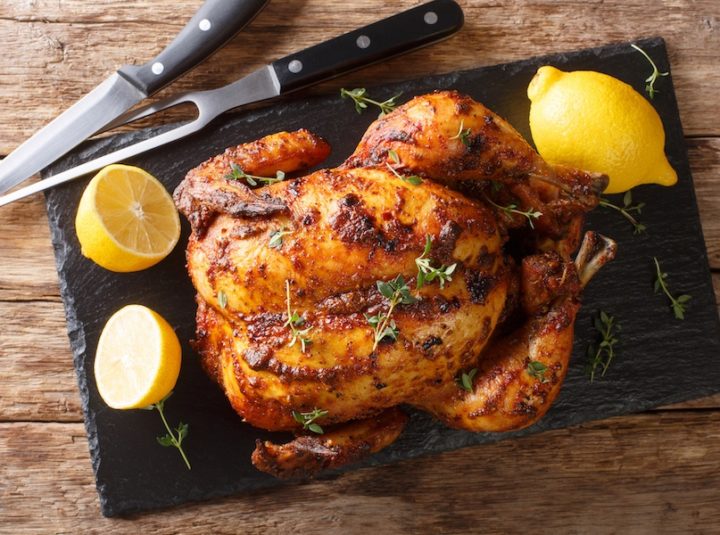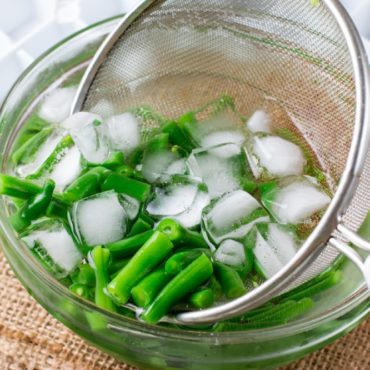You hate to see it, the pinkish color and undercooked texture on a piece of chicken. I mean, EW.
How TF do you know when the chicken you’re preparing to serve is done? A thermometer is definitely your foolproof best method, but you can also assess whether your chicken is done with these pro tips.
Get a Food Thermometer and Use It
The safest method to check if your chicken is done is with a thermometer that measures the internal temperature. According to USDA, properly cooked poultry should be at a minimum internal temperature of 165 degrees Fahrenheit.
Using this amazing device eliminates the risk of uncooked chicken by giving you an exact temperature reading of the meat. To use a food thermometer, place it in the thickest part of the meat toward the end of its cooking time. I need to know more.
For roasted chicken breasts, the thermometer should register 170 degrees. When roasting a whole chicken, a temperature between 180 and 185 degrees Fahrenheit is ideal. While a stuffed chicken should read about 170 degrees at the center of the body cavity. Who doesn’t love taking the guessing game out of getting someone sick? We do, we do!
Don’t have a thermometer? Read on for some additional tips.
Cooked Chicken is Not Pretty in Pink
One easy test is to cut the chicken piece in half and look at the color of the juice. If it’s clear or white, then your chicken is ready to eat. If the juice is pink, it’s definitely in need of more time. It’s just not a good look.
Of course, when presentation matters and you don’t want to cut the meat in half, you can make a small incision in the thickest part of the poultry. When you do that you can pull the sides apart a bit to see the color of the meat. Follow the same rule as above. Pink is not pretty for chicken, leave it to Molly Ringwald. Look for the meat to be white without even a hint of pink. Like the perfectly botoxed face of Nicole Kidman.
Check the Texture
Rubbery, jiggly textures are an obvious sign of undercooked poultry while over-cooked meat has a tight texture and may appear waxy to the eye. Perfectly prepared chicken has a firm texture and the meat pulls apart easily, providing a clear visual cue that the meat is ready to eat. Of course, the key is striking the balance between undercooking and overcooking.
Dealing with Bone-In Pieces
The trick with bone-in chicken pieces is to look past the outside and middle to check near the bone. Of course, once you’ve cut into a piece like this it can be hard to serve without looking like you already taste-tested the meal. One trick with a bone-in piece is to use a fork. When inserted, the fork should go in with ease and release clear juices. If the juices are pink or the fork does not go in easily, it’s definitely in need of more time.
Cooking Time Matters
All of these methods are good, but they don’t help if you don’t have a sense of cooking time for your chicken dish.
As with anything, cooking time may vary with a variety of factors, including the thickness and size of the chicken and how it is prepared. These time tested tips should help.
- Roasted chicken needs between 30 minutes to two hours depending on the size and how you cook it.
- Ground chicken patties may cook in 30 minutes or less.
- Whole stuffed chickens take up to 2 hours.
- Bone-in legs roast in approximately 50 minutes while boneless, skinless thighs may take only 20 to 30 minutes.
- Grilled chicken takes between five (boneless skinless thigh) and sixteen (bone-in legs) minutes for each side.
- Breaded chicken may take around twenty to thirty-five minutes.
Test out all your new skillz with our Spatchcock Roast Chicken recipe. The simplest and crispiest way to serve up a whole bird.
Unlike the Chicken, We Know When this Article is Cooked
Fun fact, chickens have a high moisture content. (cringe at the word moisture) This means that as you cook them, the moisture is reduced, which causes the chicken to get smaller. So watch your chickens and use the other tips we shared and you’ll be a chicken pro in no time. And on that note, I’m outtie. Until next time!
Have a tip of your own to share? Post them here!



